Слайд 2Project plan
Lebanon's name
Inhabitants of Lebanon
Features of Lebanon
Role of coastal country
Lebanon during

the centuries
Слайд 3The area now known as Lebanon first appeared in the history around
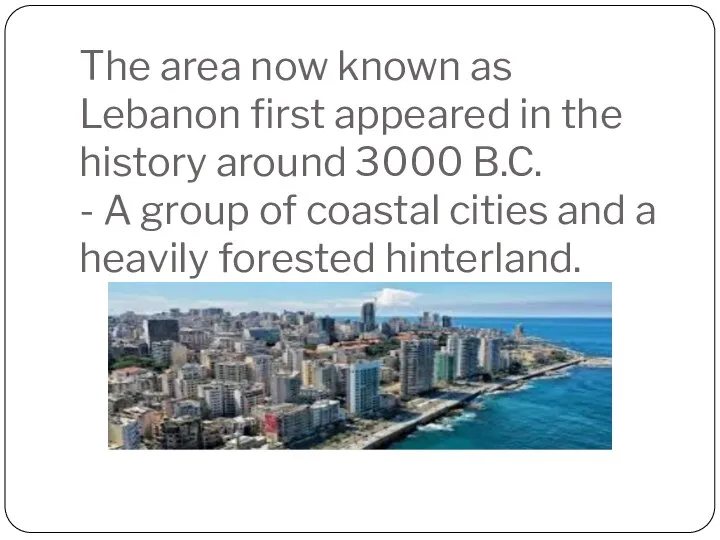
3000 B.C.
- A group of coastal cities and a heavily forested hinterland.
Слайд 4- It was inhabited by the Canaanites, a Semitic people, whom the

Greeks called Phoenicians.
Слайд 5Because the nature of the country and its location, the Phoenicia ions
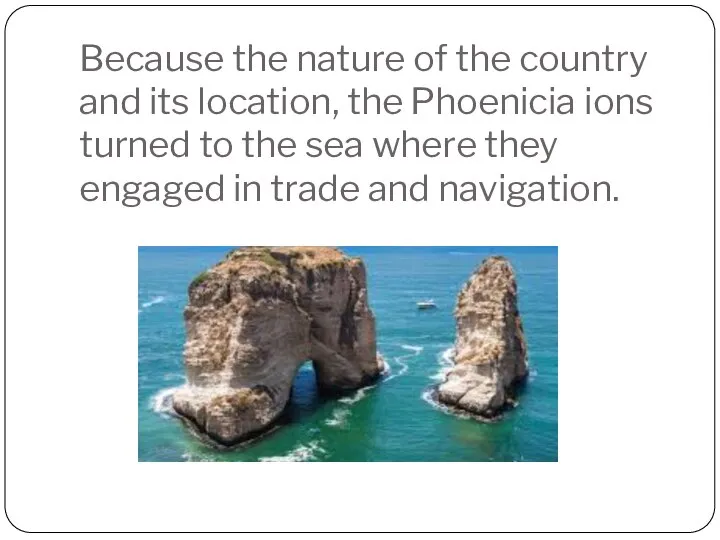
turned to the sea where they engaged in trade and navigation.
Слайд 6Each of the coastal cities was an independent kingdom noted for the
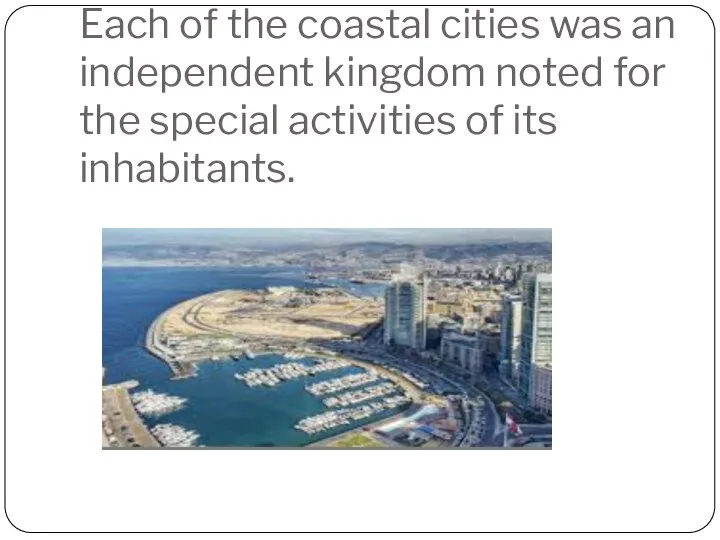
special activities of its inhabitants.
Слайд 7Tyre and Sidon were important maritime and trade centers.
Gubla was the

first Phoenician city to trade actively with Egypt.
Слайд 8Lebanon export cedar, olive oil, and wine , while importing gold and

other product from the Nile Valley.
Слайд 9Toward the fourteenth century B.C the Egyptian empire weakened and Lebanon was
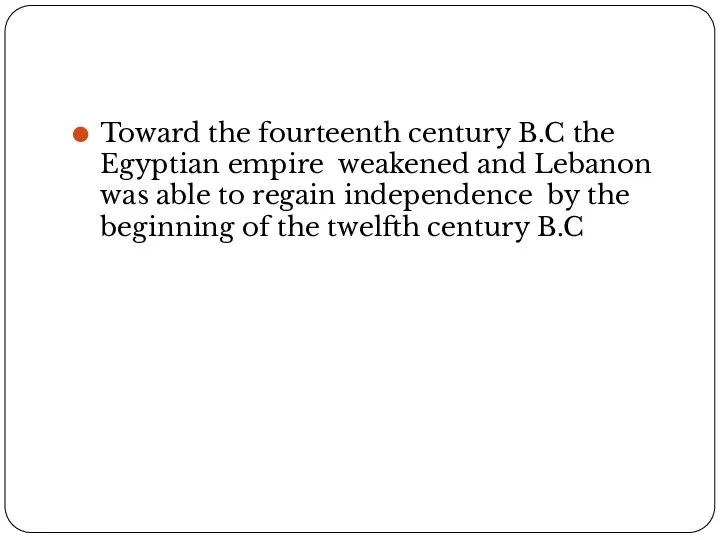
able to regain independence by the beginning of the twelfth century B.C
Слайд 10The subsequent three centuries were a period of prosperity and freedom from
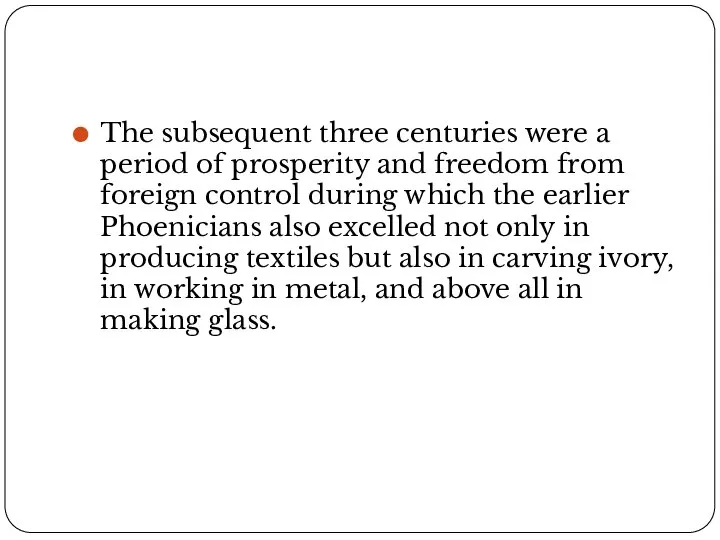
foreign control during which the earlier Phoenicians also excelled not only in producing textiles but also in carving ivory, in working in metal, and above all in making glass.









 Презентация на тему BRITAIN’S WEDDING CAPITAL (СТОЛИЦА СВАДЕБ БРИТАНИИ)
Презентация на тему BRITAIN’S WEDDING CAPITAL (СТОЛИЦА СВАДЕБ БРИТАНИИ)  She/ He is wearing al an…
She/ He is wearing al an… The new words
The new words Phrasal verbs 5 eacher switcher
Phrasal verbs 5 eacher switcher W. Santcenbacher’s contribution to the Odesa brewing industry
W. Santcenbacher’s contribution to the Odesa brewing industry Fly high 4 speaking and past simple
Fly high 4 speaking and past simple Have-has. Clothes
Have-has. Clothes Spotlight on Russia, page 6
Spotlight on Russia, page 6 1. Характеристика и классификация услуг Важную и все более возрастающую часть в международной торговле занимает торговля услугам
1. Характеристика и классификация услуг Важную и все более возрастающую часть в международной торговле занимает торговля услугам What is missing? toys
What is missing? toys Place prepositions
Place prepositions My hobby
My hobby Can I help
Can I help Расширяем словарный запас
Расширяем словарный запас Where's Monty
Where's Monty Meine Familie. 2 класс
Meine Familie. 2 класс Invader Zim
Invader Zim Презентация на тему What do you usually do and what are you doing now
Презентация на тему What do you usually do and what are you doing now  Презентация на тему About film Titanic
Презентация на тему About film Titanic  Phonetics. Spotlight 4
Phonetics. Spotlight 4 Boggle. Notes to the teacher:
Boggle. Notes to the teacher: Short u magic circle
Short u magic circle Make some sentences using the verbs: have to, must, don’t have to
Make some sentences using the verbs: have to, must, don’t have to Read these words, word combinations and sentences
Read these words, word combinations and sentences All about the world cup
All about the world cup Раздел 4 для 9В
Раздел 4 для 9В English alphabet. Ch
English alphabet. Ch Tag questions revision
Tag questions revision